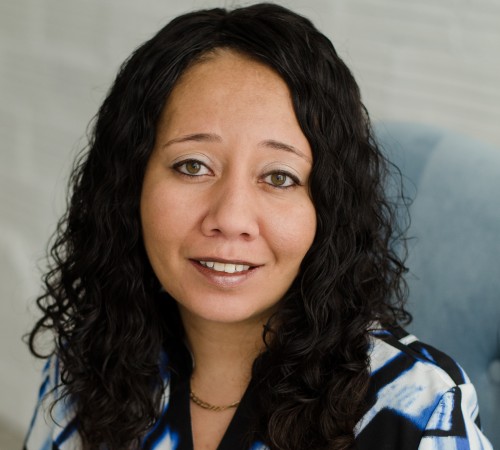Cherry Health is using EHR technology to launch new services and view and share data with other providers as it transitions away from fee-for-service care.
Federally Qualified Health Centers (FQHCs) are a breed apart. Incorporating multispecialty practices with primary care, behavioral health, and even dental care, these 1,400 providers across the US see some 30 million Americans a year, many insured by Medicare and Medicaid.
One such FQHC, Cherry Health, covering western Michigan and headquartered in Grand Rapids, serves more than 65,000 patients annually via a network of more than 80 providers and 800 healthcare professionals. The patient population is 55% Medicaid, about 15% Medicare, perhaps 20% uninsured, and a very small percentage of commercial payer coverage.
Like many other FQHCs, Cherry Health has partnered with NextGen Healthcare for its electronic health record platform. NextGen is now leveraging the cloud to allow providers to share performance metrics and learn from each other.
This should help Cherry Health as the nation's FQHC network, supported by funding from the Health Resources and Services Administration (HRSA), continues to get squeezed, and value-based payment models are just around the corner.
"The reason that we stayed with NextGen was due to the flexibility in our different specialties," says Glenda Williams, chief information officer at Cherry Health. "We can have one integrated health record, that we don't have all these separate systems that all of our staff need to look up to be able to care for the patient."

Glenda Williams, chief information officer at Cherry Health. Photo courtesy Cherry Health.
The technology also helps with another critical issue affecting healthcare: Stress and burnout.
"Our strategy has been to talk to our providers to identify what additional technologies we can put in place to help them so that they're feeling less burned out," Williams says. "Whether or not that is from a technology standpoint, from my side, or whether or not it's from a staffing side from our CMO side, maybe they need extra help. Maybe they need a different workflow. It's really about identifying what needs they have and coming up with a solution."
Cherry Health is transitioning from fee-for-service to value-based care, says Cynthia Duncanson, the organization's chief financial officer.
"We do get paid on a fee-per-service basis, and our incentives are relatively low compared to what our program income is from the Medicaid fee-for-service payments," Duncanson says. "But we are getting ready to transition within the next year or two to an alternative payment methodology for our primary care medical population, where it will be per member per month, completely crosswalked between that fee-for-service with a little bit of incentive, all the way over to mostly incentive. Medicare's also crosswalking us in that same direction as well."
In 2022, in anticipation of this change, Cherry Health implemented NextGen's population health tool, Williams says.
"My strategy is having access to data and using the data to make our decisions," she says.
NextGen has added an extra tool in this regard, by establishing a national collaborative of FQHCs using its EHR several months ago, according to Srinivas Velamoor, executive vice president and chief growth and strategy officer at NextGen Healthcare. More than 60 have signed up so far, and NextGen expects that number to grow beyond 100.
"They all have common issues in terms of having visibility to metrics, like no-shows, and making sure they're looking at the same quality measures," Velamoor says. "They are very eager to understand how they're doing relative to others in the country that look like them, and not just focus on their own performance."
Williams says the collaborative will allow FQHCs to be more innovative in solving the clinical problems they face.
"Why reinvent the wheel if someone else has already has a solution in place?" she says.
For example, in addressing no-shows, the FQHC can separate patient populations out into groups, identifying those who don’t have e-mail addresses, or those who prefer phone calls or text messages, so as to better target its messaging and marketing campaigns.
Cherry Health is also becoming dually certified as both an FQHC and a Certified Community Behavioral Health Clinic (CCBHC), as determined by the Substance Abuse and Mental Health Services Administration (SAMHSA). This will allow the organization to optimally structure patient flow and referrals between its primary care services and behavioral health, Williams says.
"We're the first FQHC to have that dual designation," she says.
This will allow Cherry Health's providers, including physicians, nurses, physician assistants, and community health workers, to move from station to station within clinics while the patients remain in one place, instead of traditionally being shown into room after room, Duncanson says.
The challenge of making all these changes requires close communication between Williams, Duncanson, and the rest of the leadership team.
"We're constantly collaborating," Duncanson says.
"We're just two doors down from each other, and we've got a standing meeting to go over any issues that we may have, and we produce monthly reports that we share," Williams says.
“Why reinvent the wheel if someone else has already has a solution in place?”
— Glenda Williams, chief information officer, Cherry Health.
Scott Mace is a contributing writer for HealthLeaders.
KEY TAKEAWAYS
With alternative payment models looming, federally qualified health centers are relying on their EHRs to improve care pathways and chart value-based care strategies.
Cherry Health, which serves western Michigan, is partnering with NextGen to make that transition easier and tackle persistent problems like no-shows.
With cloud-based platforms, these organizations can also share data and collaborate on new strategies to improve care.
